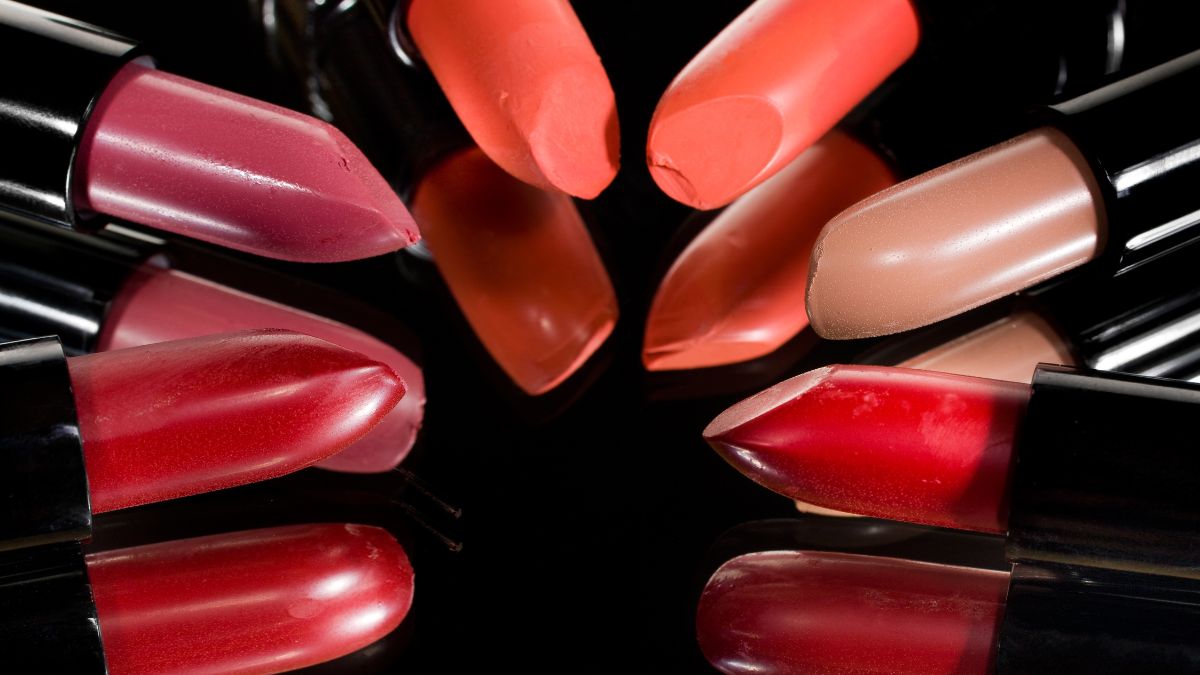Introduction
Lipstick has been a staple in the world of beauty for centuries, symbolizing femininity, empowerment, and transformation. From ancient civilizations to modern times, lipstick has played a significant role in personal and cultural expression. This article delves into the magical world of lipstick, exploring its history, impact on society, and transformative power.

1. The Historical Journey of Lipstick
Lipstick’s history dates back over 5,000 years to ancient Mesopotamia, where women used crushed gemstones to decorate their lips. In ancient Egypt, Cleopatra famously used a blend of crushed ants and carmine to create a striking red color. Over the centuries, lipstick has evolved in composition and significance, reflecting cultural shifts and advancements in cosmetic technology.
2. The Cultural Significance of Lipstick
Lipstick has long been a symbol of status and identity. In the Elizabethan era, only noblewomen and actors wore lipstick, associating it with social standing. During World War II, red lipstick became a symbol of resilience and patriotism. Today, lipstick continues to be a powerful tool for self-expression and cultural identity across the globe.
3. The Psychology of Lipstick
The act of applying lipstick is more than just a beauty ritual; it can significantly impact one’s mood and confidence. Psychologically, wearing lipstick can make individuals feel more empowered, attractive, and ready to tackle challenges. This phenomenon, often referred to as the “lipstick effect,” demonstrates how this simple cosmetic product can boost self-esteem and change perceptions.
4. The Science Behind Lipstick Formulation
Creating the perfect lipstick involves a delicate balance of science and art. Modern lipstick formulations include a mix of waxes, oils, pigments, and emollients to ensure smooth application and long-lasting wear. Advances in cosmetic chemistry have led to a wide range of textures, finishes, and colors, allowing consumers to find the perfect lipstick for any occasion.

5. Iconic Lipstick Shades and Their Stories
Certain lipstick shades have achieved iconic status over the years. Revlon’s “Cherries in the Snow” and MAC’s “Ruby Woo” are just a couple of examples of shades that have captured the hearts of lipstick enthusiasts. Each iconic shade carries its own story, reflecting the trends and cultural moments of its time.
6. Lipstick and Gender Expression
While traditionally associated with women, lipstick has become an important tool for gender expression among all genders. In recent years, the beauty industry has embraced inclusivity, with many brands offering gender-neutral products and marketing campaigns. Lipstick allows individuals to express their identity and challenge traditional gender norms.
7. Lipstick in the Media and Pop Culture
Lipstick has played a significant role in media and pop culture, often serving as a symbol of empowerment and rebellion. From Marilyn Monroe’s signature red lips to the bold looks of modern influencers, lipstick remains a powerful tool for making a statement. Its presence in film, music, and fashion highlights its enduring appeal and versatility.
8. The Art of Choosing the Right Lipstick
Choosing the perfect lipstick shade can be both an art and a science. Factors such as skin tone, undertone, and personal style all play a role in finding the ideal color. Whether opting for a classic red, a subtle nude, or a bold berry, the right lipstick can enhance one’s natural beauty and make a lasting impression.
9. The Transformative Power of Lipstick
Lipstick has the power to transform not only appearance but also mindset. A swipe of color can change a person’s demeanor, giving them the confidence to take on the world. This transformative quality of lipstick is why it remains a beloved cosmetic product, cherished for its ability to make individuals feel beautiful and empowered.

10. The Environmental Impact of Lipstick
As the beauty industry becomes more environmentally conscious, many consumers are considering the impact of their cosmetic choices. Sustainable packaging, cruelty-free formulations, and ethical sourcing are becoming important factors in the lipstick market. Brands are responding to this demand by offering eco-friendly options that cater to environmentally aware consumers.
11. Lipstick Trends Through the Decades
Lipstick trends have evolved significantly over the decades, reflecting cultural shifts and technological advancements. The bold reds of the 1950s, the frosted pinks of the 1970s, and the matte neutrals of the 1990s all highlight the dynamic nature of lipstick trends. Today, the beauty industry embraces diversity and experimentation, with limitless possibilities for creativity and self-expression.
12. The Future of Lipstick
The future of lipstick is bright, with innovations in technology and formulation paving the way for new possibilities. From long-lasting, smudge-proof formulas to customizable shades, the lipstick industry continues to evolve. As consumers increasingly prioritize sustainability and inclusivity, the future of lipstick will likely reflect these values, offering products that cater to a diverse and conscientious audience.
Conclusion
Lipstick is more than just a cosmetic product; it is a symbol of empowerment, self-expression, and cultural identity. Its rich history and enduring appeal make it a beloved staple in the world of beauty. As society continues to evolve, so too will the magic of lipstick, inspiring individuals to express themselves and embrace their unique beauty.

FAQs
1. How has lipstick evolved over time?
Lipstick has evolved from ancient formulations using natural dyes to modern, scientifically developed products with a wide range of colors and finishes.
2. What is the “lipstick effect”?
The “lipstick effect” refers to the phenomenon where individuals feel more confident and empowered after applying lipstick.
3. How do I choose the right lipstick shade for my skin tone?
Consider your skin tone and undertone. Warm undertones pair well with coral and orange-based reds, while cool undertones complement blue-based reds and pinks.
4. Are there eco-friendly lipstick options available?
Yes, many brands now offer eco-friendly lipstick options with sustainable packaging and cruelty-free formulations.
5. Can lipstick be used by all genders?
Absolutely! Lipstick is a tool for self-expression and can be used by individuals of all genders to express their identity and style.










